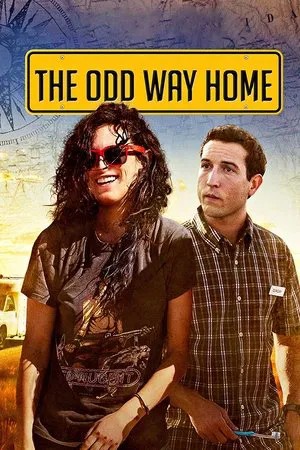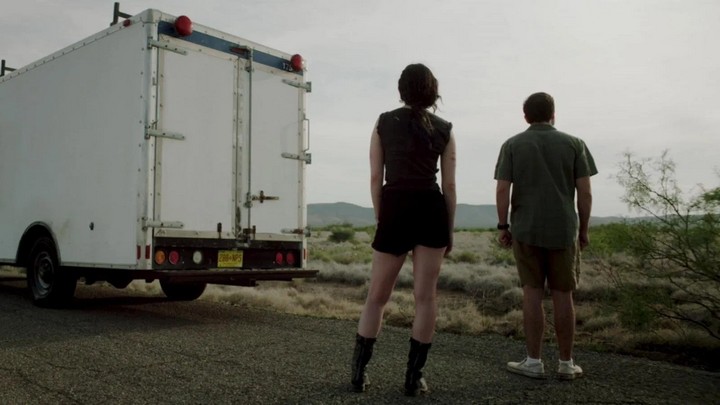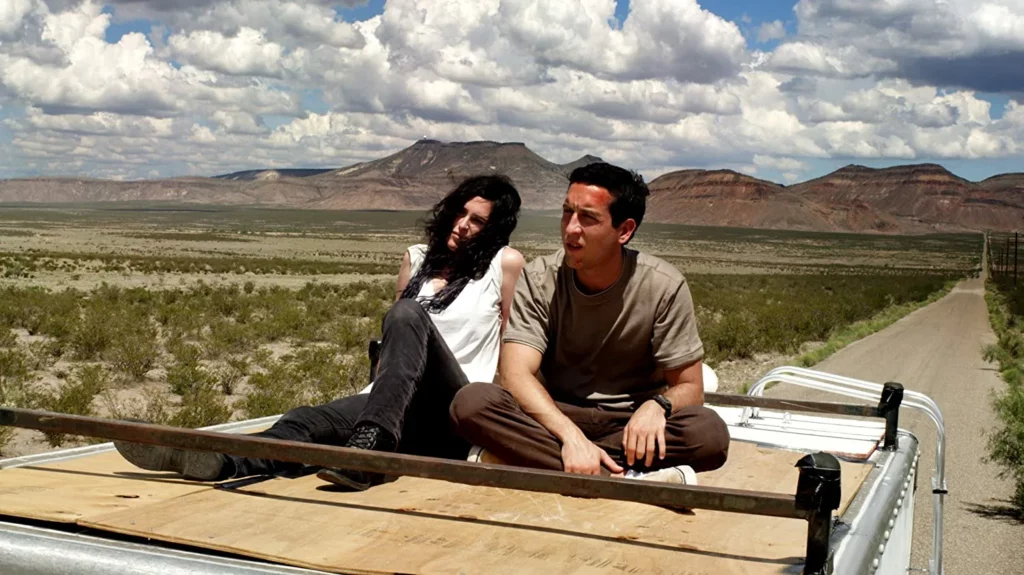As Ferdosa Abdi, I approach films that delve into the complexities of human connection and the journeys we take, both internal and external, with a keen interest. Rajeev Nirmalakhandan’s 2013 independent film, “The Odd Way Home,” promises such a journey, bringing together two unlikely souls on a road trip through the American Southwest.
“The Odd Way Home” is a drama that leans into the familiar tropes of the road movie genre, using the vast, open landscapes of New Mexico as a backdrop for the burgeoning relationship between its two central characters. Directed by Rajeev Nirmalakhandan, the film sets out to explore themes of trauma, acceptance, and the unconventional ways in which we can find understanding and a sense of belonging.

The Genesis of an Indie Road Trip
“The Odd Way Home” emerged as an independent production, a labor of passion for director Rajeev Nirmalakhandan and his team. Independent filmmaking often allows for more personal and character-driven stories to come to the forefront, and this film appears to be a testament to that. Premiering at the Austin Film Festival in 2013 provided the film with valuable exposure within the indie film circuit. Its subsequent release on VOD by Breaking Glass Pictures in June 2014 indicates a distribution strategy focused on reaching audiences through digital platforms rather than a wide theatrical release, which is common for films of this nature. This release model shapes the film’s accessibility and how audiences are likely to discover it.
A Collision of Worlds: Plot and Character Dynamics
The narrative of “The Odd Way Home” centers on Maya (Rumer Willis), a young woman on the run from an abusive relationship. In a moment of desperation, her path violently intersects with that of Duncan (Chris Marquette), a young man with high-functioning autism. A accidental encounter involving a robbery and a stolen delivery truck throws these two disparate individuals together, forcing them into an impromptu road trip.
Their journey, initially driven by circumstance, evolves into a poignant exploration of their individual struggles and their growing connection. As they travel across the striking landscapes of New Mexico, they begin to let down their guards, sharing glimpses of their vulnerabilities and finding a unexpected sense of solace in each other’s company. The film highlights Duncan’s unique perspective on the world, shaped by his autism, and Maya’s attempts to navigate her trauma while learning to care for someone other than herself.
The plot follows a picaresque structure, with the pair encountering various individuals and situations on their way to find Duncan’s only living relative. These encounters serve to test their bond and reveal more about their characters. The film aims to redefine the notion of family, suggesting that connection and understanding can be found in the most unlikely of places and with the most unexpected of companions. While some reviews have drawn comparisons to films like “Rain Man” or “Adam,” “The Odd Way Home” carves its own path with its specific character dynamics and the raw emotional core of Maya’s journey.
Performances on the Open Road: Cast
The success of a character-driven road movie like “The Odd Way Home” hinges significantly on the performances of its lead actors. Rumer Willis takes on the role of Maya, portraying a woman grappling with the raw wounds of abuse and the desperation of being on the run. Chris Marquette plays Duncan, a challenging role that requires a nuanced understanding of high-functioning autism. The chemistry between Willis and Marquette is crucial to the film’s emotional impact, as their developing bond is the heart of the story.
User reviews on platforms like IMDb and Amazon frequently praise the performances of both lead actors, noting their ability to bring depth and authenticity to their characters. Some reviewers were particularly impressed with Marquette’s portrayal of Duncan, finding it both sensitive and believable. Supporting cast members, including Veronica Cartwright as Francine and Brendan Sexton III as Dave, contribute to the narrative, adding layers to the world Maya and Duncan inhabit.

Capturing the Canvas: Cinematography and Visuals
The visual element of a road movie is paramount, with the landscape often acting as a silent character. The cinematography in “The Odd Way Home” aims to capture the enchanting vistas of New Mexico, using the expansive scenery to mirror the internal journeys of the protagonists. While professional critical reviews from outlets like Variety and The Hollywood Reporter were generally not favorable, some user reviews have commented positively on the film’s visual aspects.
The filmmaking style likely focuses on highlighting the isolation and beauty of the open road, using wide shots to emphasize the characters’ place within the vast landscape and tighter shots to capture the intimacy of their interactions. For an independent film, the cinematography would aim to make the most of the natural surroundings to create a compelling visual backdrop for the emotional narrative.
Critical Crossroads and Audience Perspectives
Critical reception for “The Odd Way Home” from major film critics appears to have been largely negative. Reviews from Variety and The Hollywood Reporter, while not fully accessible, are summarized as being generally unfavorable. For instance, the Metacritic score, based on a limited number of critic reviews, is a low 30, indicating “generally unfavorable reviews.” Criticisms often pointed to the film’s use of clichés and a perceived lack of depth in its handling of sensitive themes.
However, audience reception, as reflected in user ratings and reviews on platforms like IMDb and Amazon, tells a somewhat different story. The film holds a respectable 6.4/10 on IMDb based on over 200 user ratings, and a very positive 5.0 out of 5 stars on Amazon based on a smaller number of reviews. User reviews on Letterboxd also show a range of opinions but with a significant number of positive ratings and heartfelt responses to the film’s emotional core and the lead performances. This disparity between professional critics and general audiences is not uncommon for independent films, where a niche audience can connect deeply with a story that might not resonate with mainstream critics.
The Journey’s End: Reach and Reception
As an independent film released on VOD, “The Odd Way Home” did not have a traditional box office run, and specific earning figures are not readily available. Its success is measured by its ability to find its audience through film festivals and digital distribution. The film’s presence on platforms like Amazon and its positive user ratings suggest that it has managed to connect with viewers who appreciate its character-driven narrative and its sensitive portrayal of its protagonists.
The film’s popularity is likely concentrated within the indie film community and among viewers who are drawn to stories about human connection and overcoming adversity. The audience reception, as seen in online reviews, indicates that while some may find the film uneven or reliant on familiar tropes, many others have been moved by its heartfelt story and the performances of Rumer Willis and Chris Marquette.
Final Thoughts: Finding Beauty in the Unconventional
“The Odd Way Home” is a film with its heart in the right place. While it may not entirely escape the conventions of the road movie genre or satisfy every critic, it offers a sincere and often touching portrayal of an unlikely bond formed under challenging circumstances. The strength of the film lies in its commitment to its characters and the genuine chemistry between Rumer Willis and Chris Marquette, whose performances elevate the material. It is a film that speaks to the possibility of finding connection and understanding in the most unexpected of journeys, reminding us that sometimes, the odd way home is the most meaningful path of all.
| Category | Information |
|---|---|
| Director | Rajeev Nirmalakhandan |
| Main Cast | Rumer Willis, Chris Marquette, Brendan Sexton III, Veronica Cartwright |
| Runtime | 1 hour 27 minutes |
| Genre | Drama, Road Movie |
| IMDb Rating | 6.4/10 (based on user ratings) |
| Rotten Tomatoes Audience Score | N/A (Critic Score: 30% based on limited reviews) |
| TMDB Rating | 65% |
| Metacritic Score | 30/100 (based on limited critic reviews) |
| Critical Reception | Mostly negative from professional critics, more positive from audiences. |
| Release Format | Premiered at Austin Film Festival (2013), Released on VOD (2014) |
| Origin | United States |
| Release Year | 2013 (Festival Premiere) |



